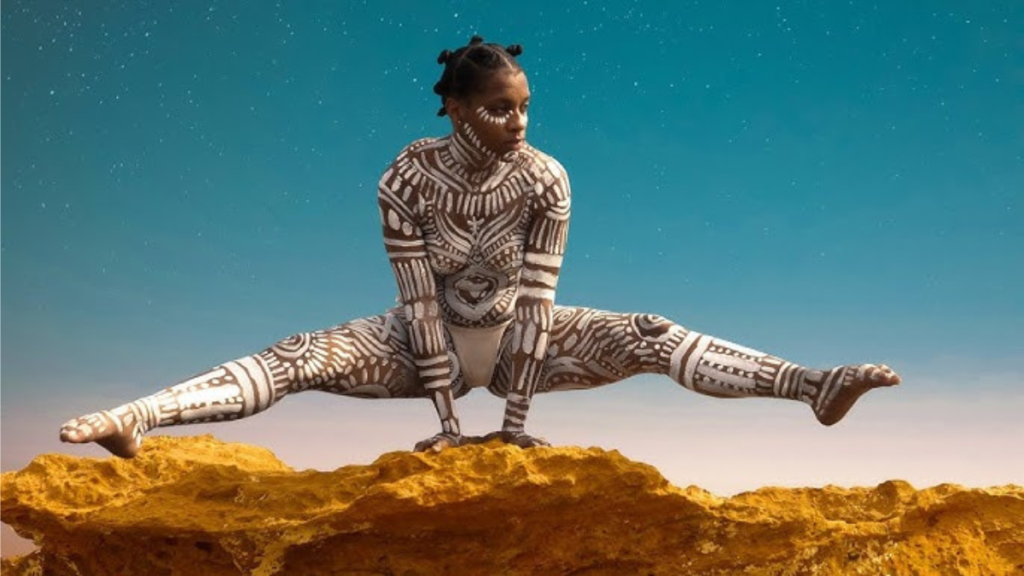Body paint a unique art form, has evolved from a tribal tradition to a modern form of artistic expression. Its history spans centuries, symbolizing spiritual connection and social hierarchy. In recent decades, body pain’t has found a new home in contemporary art, blending traditional techniques with modern creativity, resulting in stunning visuals that challenge societal norms. The psychology of body pain’t is profound, as it can enhance body image and boost self-esteem. Body pain’t has also integrated into fashion, becoming a powerful medium for designers to express their artistic visions. Celebrities are increasingly embracing body pain’t for events and photoshoots, gaining mainstream recognition. The technical artistry of body pain’t requires technical skill and precision, with professional body painters employing various tools to achieve intricate details. Body pain’t has also become a form of activism, with activists using their bodies to convey messages about social issues, human rights, and environmental concerns. Body pain’t festivals worldwide celebrate creativity and self-expression, while social media platforms have pushed it into the digital spotlight. Despite its growing popularity, body pain’t faces controversies, including cultural appropriation, consent, and the line between art and explicit content.
The Historical Tapestry of Body Paint:
From ancient rituals to tribal celebrations, body paint has been an integral part of diverse cultures. Body paint’s historical significance is far-reaching, symbolizing everything from spiritual connection to social hierarchy. By understanding its roots, we gain a deeper appreciation for the artistry that spans centuries.
Modern Renaissance:
In recent decades, body paint has experienced a revival, finding a new home in the world of contemporary art. The fusion of traditional techniques with modern creativity has given rise to stunning visuals that challenge societal norms. Artists and enthusiasts alike are pushing the boundaries of self-expression, using the body as a living canvas.
The Psychology of Body Painting:
Delving into the psychology of body paint unveils a realm of emotions and perceptions. The act of being painted and the visual impact on observers can evoke a spectrum of feelings. Studies show that body painting can enhance body image and boost self-esteem, providing a therapeutic outlet for both the artist and the subject.
The Intersection of Body Paint and Fashion:
Body paint has seamlessly integrated into the fashion world, becoming a powerful medium for designers to convey their artistic visions. From runway shows to avant-garde photoshoots, body paint in fashion is more than just a trend; it’s a statement. The malleability of body paint allows for the creation of living, breathing works of art.
Celebrity Endorsement:
As celebrities increasingly embrace body paint for red carpet events and photoshoots, the art form gains mainstream recognition. The bold choices of influencers and stars contribute to breaking down societal barriers, encouraging individuality, and fostering a broader acceptance of unconventional forms of expression.
Behind the Scenes: The Technical Artistry:
Creating a masterpiece on the human body requires more than just artistic flair; it demands technical skill and precision. Professional body painters employ a range of tools, including airbrushes, sponges, and brushes, to achieve intricate details. Understanding the nuances of skin tones, textures, and contours is crucial for a seamless transformation.
Body Paint as a Form of Activism:
Beyond aesthetics, body paint has become a potent tool for advocacy and protest. Activists worldwide have used their bodies as canvases to convey powerful messages about social issues, human rights, and environmental concerns. The visibility of these campaigns amplifies their impact, sparking conversations that extend far beyond the realms of traditional activism.
The Rising Popularity of Body Paint Festivals:
Across the globe, body paint festivals have become vibrant celebrations of creativity and self-expression. Artists and participants converge to share ideas, showcase their skills, and revel in the liberating experience of being painted. These festivals create a sense of community, fostering a supportive environment for artists to thrive.
Body Paint in the Digital Age:
Social media platforms have played a pivotal role in propelling body pain’t into the digital spotlight. Artists can now showcase their work to a global audience, connecting with enthusiasts, clients, and collaborators. The visual appeal of body paint translates exceptionally well online, making it a favorite subject for viral content and collaborations.
Challenges and Controversies:
Despite its growing popularity, body pain’t isn’t without its controversies. Cultural appropriation, consent, and the line between art and explicit content are ongoing debates within the community. Navigating these issues responsibly is crucial to maintaining the integrity of body pain’t as an art form.
Conclusion: The Ever-Evolving Canvas:
Body paint is a dynamic art form that transcends time, culture, and societal norms. Its evolution from ancient rituals to modern masterpieces reflects the human desire for self-expression and creativity. As body pain’t continues to captivate audiences worldwide, it remains a testament to the limitless potential of artistic innovation on the canvas that is the human body. Embrace the journey, and let the colors tell your story.
Read More : rubblemagazine.com







